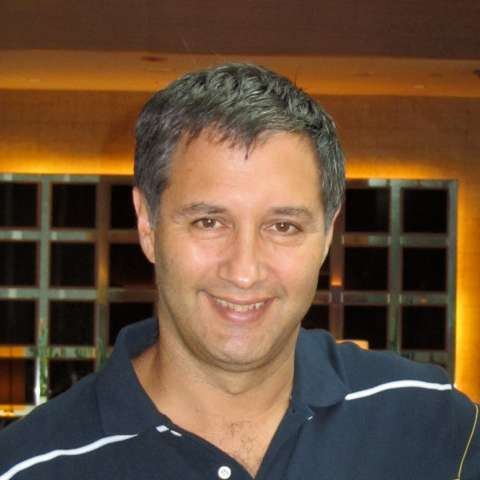For many people, to repeat a commonplace, opera is about those "wow" moments, the times when music, voice and staging come together to lift you onto a different plane. In ENO's Tosca last night, a "wow" moment happened more or less whenever Gwyn Hughes Jones opened his mouth: his Cavaradossi had total heroism, total artistry and effortless, silk-smooth phrasing. From the opening Recondita armonia to the third act E lucevan le stelle and the ensuing duet, he was thoroughly entrancing.
As Cavaradossi's nemesis Scarpia, Anthony Michaels-Moore may not have quite hit the same vocal heights - the score doesn't give the same opportunities - but he was the ultimate stage villain, with a commanding presence, scarily believable as the stereotypical evil police chief. As Tosca, Claire Rutter sang beautifully when releasing full power, albeit less confident in the pianissimi. She wasn't quite able to command the stage and draw all eyes to her without using that strength of voice, but even those moments improved as the second act progressed, and overall, it was a fine singing performance. In her third act duet with Hughes Jones, the audience kept desperately trying to break out into applause and shushing itself because there wasn't really a suitable break. The part of Angelotti is the smallest in the quartet, but Matthew Hargreaves made more out of it than most, with a clear, urgent voice and his slim frame well suited to the character of the gaunt, starving prisoner.
In the three years or so that I've been reviewing opera, this is the first time I've reviewed a production twice, this being a revival of Catherine Malfitano's production from May 2010. I thought the production was wonderful then, and if anything, it's got even better: happily, Malfitano herself is directing the revival. Frank Philipp Schlössman's sets are both inventive and artistic without in any way departing from the concept of the original opera, which is unusual in being placed with great precision in place (the church of Sant'Andrea della Valle, the Palazzo Farnese and the Castel Sant'Angelo in Rome) and time (14th June 1800, the date of the battle of Marengo). The set for each act is a spectacular depiction: the church is painted in loving detail; Scarpia's apartment is framed by its triptych of writing desk, chaise longue and window onto the courtyard where the gallows are to be built; the inside of the prison is seen in distorted perspective looking up towards the starlit sky. The drama of the translation still works well, although its phrasing remains problematic. But (unless my memory fails me), Malfitano has been working on the movement: Scarpia's entrance, to the accompaniment his huge three-chord motif and the black swirls of his henchmen's greatcoats, was a true coup de théâtre, another of those "wow" moments.
Victorien Sardou, on whose play the opera is based, stands accused of writing plays that were too showy and spectacular, full of tension and dramatic moments but little depth; famously, George Bernard Shaw coined the phrase "Sardoodledom" to describe the style. Be that as it may, Tosca makes for a great dramatic opera, because Puccini's music fills in the gaps in characterisation and enhances the action. When Tosca and Cavaradossi are bickering in the church as Angelotti cowers in the chapel, you feel every moment as the clock ticks down towards the point at which Scarpia will discover the escape, and the near-rape and torture of Act II is as powerful as any scene in opera.
Overall, there's not much to choose between this revival and the huge success of the original of two seasons ago: I somewhat preferred Edward Gardner's conducting then to Stephen Lord's last night (opinions may differ - Lord is a little more emphatic and therefore a little more ponderous) and I somewhat preferred Rutter to Amanda Echalaz. But these are minor details: it's an outstanding production overall. The cheers at the curtain calls were louder than I've ever heard them, and Gwyn Hughes-Jones's performance as Cavaradossi is one that I'm going to remember.


